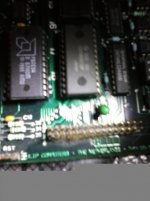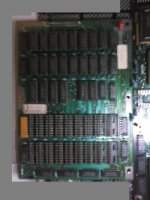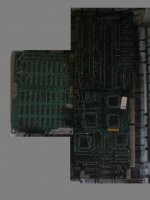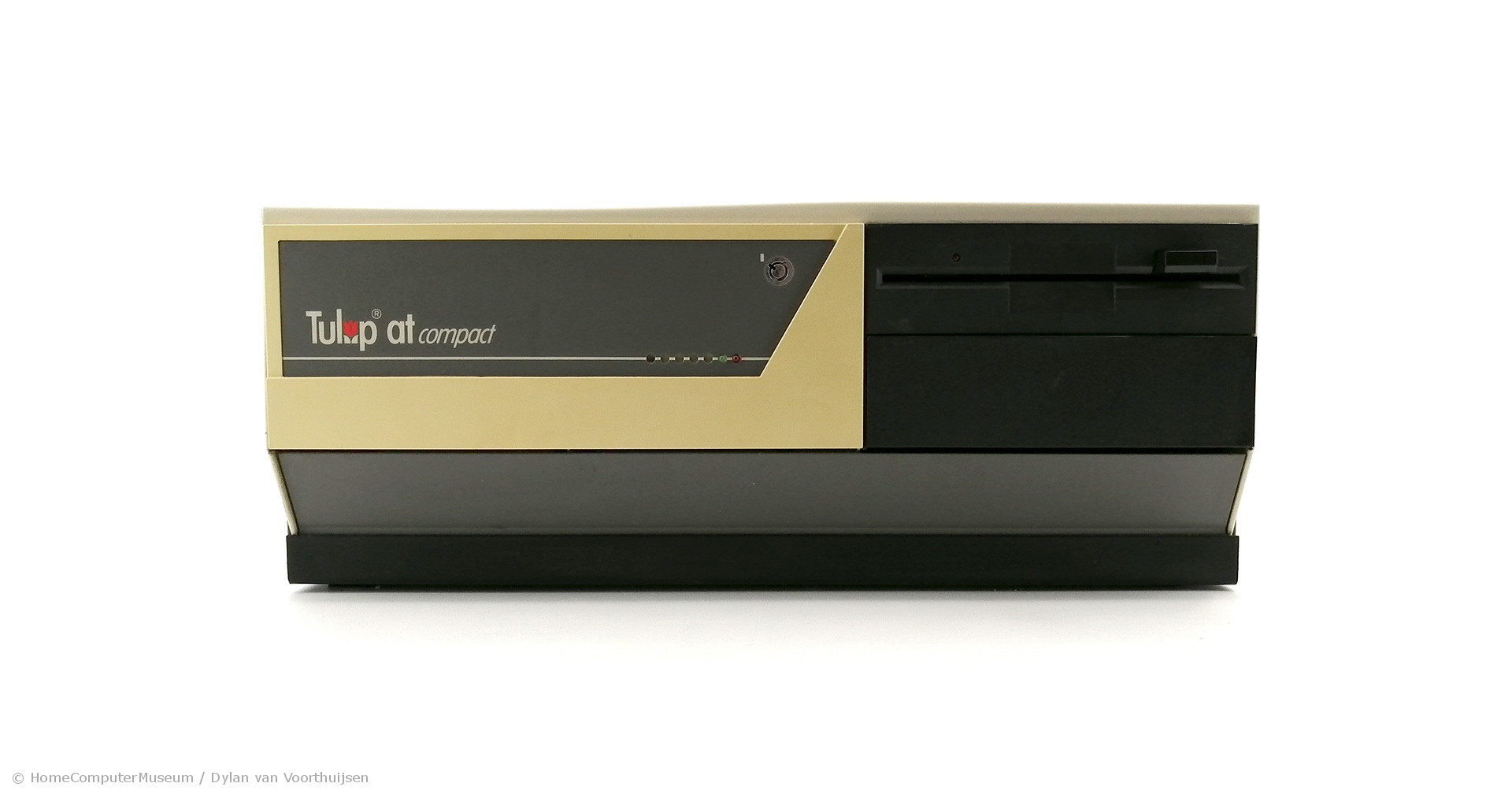Tetrium2
Experienced Member
Hi all.
I've come here to ask a question about an ISA card that I've had for a long time now (10+ years I think).
At first glance it seems to basically be a 286 on an ISA board, it was made by Tulip (former Dutch computer builder). Only thing I remember about how I aquired it is that I must've taken it out of a computer while dumpster diving.
The card seems to have a 286 CPU made by AMD, an empty 287 socket, a daughterboard with lots of little RAM chips, a chipset and it has a DIN connector.
This makes me think this was some kind of upgrade card for upgrading a 8086 or similar to a 286.
I never tested it, for several reasons. One of them was to prevent it from getting damaged by inappropriate usage (if I don't know what I'm doing, I'd rather wait till I do know what I'm supposed to do).
I did take some pics of the board, but be warned, I took them with my mobile (my old camera died) and I can't really crop them as this would only make the pics harder to read and the quality of the pics is rather poor.
So I will describe the silkscreened print as one can't really tell by the pics.
Top left (daughterboard:
TULIP COMPUTERS
MEX 2688KB
The daughterboard seems to only have half of it's RAM sockets filled.
One of the chips (seems as if it has 2x2 rows of chips, 1x2 rows are filled and the other 1x2 rows are empty sockets) on the daughterboard reads as:
TMS 4256-12NL
EHI 802 OLAS (some the chips have OLBS instead of OLAS)
The chips (4 in total) in between the 2 different double rows of memory chips read as:
TMS 4464-12NL
EHP 8801
The CPU reads:
N80286-10/C2H (I presume AMD 286 at 10MHz in a certain package)
It has a chipset (I presume it's a chipset) made by "CHIPS" consisting of 4 socketed chips, the largest reads:
CHIPS
P82C201-10
It seems to have 2 BIOS chips, but they have an Intel logo on them. Sticker reads:
TC7B0 1.03 (I suppose TC stands for Tulip Computers)
6 NOV 87
The 'mainboard' has the following silkscreaned:
TULIP COMPUTERS - THE NETHERLANDS - P/N 38-12280-01
When I found the board, it had already sustained minor corrosion (1 or 2 of the screws was harder to remove because of this) and a few of the RAM chips seem to have minor scratches on their surface, but other than that the board seems to be undamaged. It's exactly 34cm (was the maximum length, as you probably already know) and is very heavy!
Can anyone tell me what exactly this is and what it's potential uses could be today?
And it's possible I already asked about this particular board before, I can't remember though (google couldn't find the part number so I presume I didn't post it's part number previously).
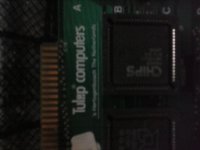
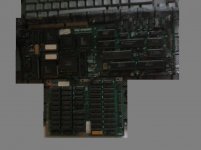
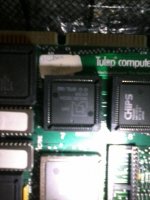
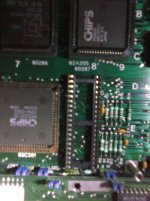
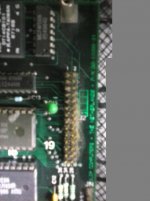
I've come here to ask a question about an ISA card that I've had for a long time now (10+ years I think).
At first glance it seems to basically be a 286 on an ISA board, it was made by Tulip (former Dutch computer builder). Only thing I remember about how I aquired it is that I must've taken it out of a computer while dumpster diving.
The card seems to have a 286 CPU made by AMD, an empty 287 socket, a daughterboard with lots of little RAM chips, a chipset and it has a DIN connector.
This makes me think this was some kind of upgrade card for upgrading a 8086 or similar to a 286.
I never tested it, for several reasons. One of them was to prevent it from getting damaged by inappropriate usage (if I don't know what I'm doing, I'd rather wait till I do know what I'm supposed to do).
I did take some pics of the board, but be warned, I took them with my mobile (my old camera died) and I can't really crop them as this would only make the pics harder to read and the quality of the pics is rather poor.
So I will describe the silkscreened print as one can't really tell by the pics.
Top left (daughterboard:
TULIP COMPUTERS
MEX 2688KB
The daughterboard seems to only have half of it's RAM sockets filled.
One of the chips (seems as if it has 2x2 rows of chips, 1x2 rows are filled and the other 1x2 rows are empty sockets) on the daughterboard reads as:
TMS 4256-12NL
EHI 802 OLAS (some the chips have OLBS instead of OLAS)
The chips (4 in total) in between the 2 different double rows of memory chips read as:
TMS 4464-12NL
EHP 8801
The CPU reads:
N80286-10/C2H (I presume AMD 286 at 10MHz in a certain package)
It has a chipset (I presume it's a chipset) made by "CHIPS" consisting of 4 socketed chips, the largest reads:
CHIPS
P82C201-10
It seems to have 2 BIOS chips, but they have an Intel logo on them. Sticker reads:
TC7B0 1.03 (I suppose TC stands for Tulip Computers)
6 NOV 87
The 'mainboard' has the following silkscreaned:
TULIP COMPUTERS - THE NETHERLANDS - P/N 38-12280-01
When I found the board, it had already sustained minor corrosion (1 or 2 of the screws was harder to remove because of this) and a few of the RAM chips seem to have minor scratches on their surface, but other than that the board seems to be undamaged. It's exactly 34cm (was the maximum length, as you probably already know) and is very heavy!
Can anyone tell me what exactly this is and what it's potential uses could be today?
And it's possible I already asked about this particular board before, I can't remember though (google couldn't find the part number so I presume I didn't post it's part number previously).






